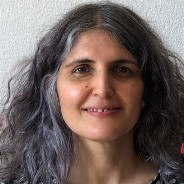Energy and Nutrient Recovery by Hydrothermal Treatments
A special issue of Resources (ISSN 2079-9276).
Deadline for manuscript submissions: closed (31 October 2023) | Viewed by 11776
Special Issue Editors
Interests: waste management; waste to energy; hydrothermal treatments; wastewater treatment; anaerobic digestion; advanced oxidation processes; environmental catalysis
Interests: waste management; waste to energy; hydrothermal treatments; wastewater treatment; advanced oxidation processes; environmental catalysis
Special Issue Information
Dear Colleagues,
Hydrothermal processing of biowaste has been recently recognized as a promising technology to efficiently reduce waste volume, recover bioenergy and nutrients, destroy organic contaminants, and eliminate pathogens. This Special Issue is focused on all of the technologies that are able to carry out nutrient and energy recovery from any kind of waste (animal manure, municipal waste, organic waste from the industrial food sector, sewage sludge, green waste, among others). Particular emphasis is placed on to those technologies that are currently at a high technological readiness level, thereby including their applicability through techno-economical and life cycle analysis.
Prof. Dr. Angel F. Mohedano
Prof. Dr. Elena Diaz
Prof. Dr. M. Angeles de la Rubia
Guest Editors
Manuscript Submission Information
Manuscripts should be submitted online at www.mdpi.com by registering and logging in to this website. Once you are registered, click here to go to the submission form. Manuscripts can be submitted until the deadline. All submissions that pass pre-check are peer-reviewed. Accepted papers will be published continuously in the journal (as soon as accepted) and will be listed together on the special issue website. Research articles, review articles as well as short communications are invited. For planned papers, a title and short abstract (about 100 words) can be sent to the Editorial Office for announcement on this website.
Submitted manuscripts should not have been published previously, nor be under consideration for publication elsewhere (except conference proceedings papers). All manuscripts are thoroughly refereed through a single-blind peer-review process. A guide for authors and other relevant information for submission of manuscripts is available on the Instructions for Authors page. Resources is an international peer-reviewed open access monthly journal published by MDPI.
Please visit the Instructions for Authors page before submitting a manuscript. The Article Processing Charge (APC) for publication in this open access journal is 1600 CHF (Swiss Francs). Submitted papers should be well formatted and use good English. Authors may use MDPI's English editing service prior to publication or during author revisions.
Keywords
- waste management
- waste to energy
- hydrothermal treatments
- anaerobic digestion
- dark fermentation
- circular economy
Benefits of Publishing in a Special Issue
- Ease of navigation: Grouping papers by topic helps scholars navigate broad scope journals more efficiently.
- Greater discoverability: Special Issues support the reach and impact of scientific research. Articles in Special Issues are more discoverable and cited more frequently.
- Expansion of research network: Special Issues facilitate connections among authors, fostering scientific collaborations.
- External promotion: Articles in Special Issues are often promoted through the journal's social media, increasing their visibility.
- e-Book format: Special Issues with more than 10 articles can be published as dedicated e-books, ensuring wide and rapid dissemination.
Further information on MDPI's Special Issue polices can be found here.







